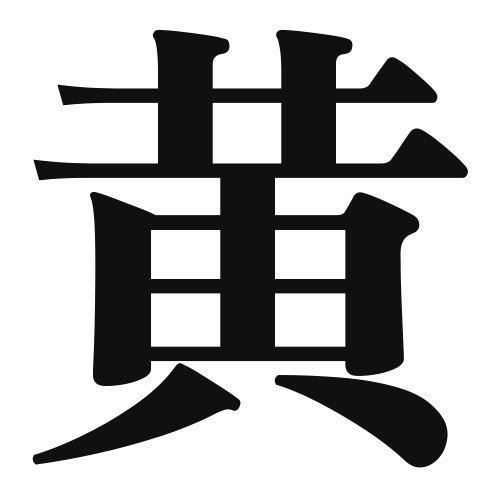1. Overview of Meaning
The kanji “黄” (pronounced “ki” in Japanese) means “yellow.” It represents the color associated with brightness, warmth, and cheerfulness. In various contexts, it can also symbolize caution or warning, as seen in traffic lights.
2. Formation and Radical
Formation of the Kanji: The kanji “黄” is a phonetic-ideographic character (形声文字). It combines the radical for “color” (色) with a phonetic component that suggests its pronunciation.
Radical: The radical for “黄” is 色 (shiki), which relates to colors and hues.
3. Examples of Usage
Common Words and Phrases:
- 黄色 (きいろ, kiiro) – yellow
- 黄昏 (たそがれ, tasogare) – twilight
Example Sentences in Daily Conversation:
- この花は黄色です。 (このはなはきいろです。) – This flower is yellow.
- 黄昏時に散歩するのが好きです。 (たそがれどきにさんぽするのがすきです。) – I like to take walks at twilight.
4. Synonyms and Antonyms
Similar Kanji:
- 金 (きん, kin) – gold: While both represent colors, “金” refers to a metallic hue, often associated with wealth.
- 橙 (だいだい, daidai) – orange: This kanji represents a color that is a mix of yellow and red.
Antonyms:
- 青 (あお, ao) – blue: This kanji represents a color that is often seen as cool and calming, contrasting with the warmth of yellow.
5. Cultural and Historical Background
Relation to Japanese Culture: In Japanese culture, yellow is often associated with courage and bravery, as seen in the historical use of yellow banners in battles. It is also a color of happiness and is used in various festivals.
Proverbs and Idioms:
- 「黄昏時」 (たそがれどき, tasogaredoki) – literally “twilight time,” often used to describe a time of reflection or transition.
- 「黄色い声」 (きいろいこえ, kiiroi koe) – “yellow voice,” referring to a cheerful or lively voice, often used in the context of lively conversations.
